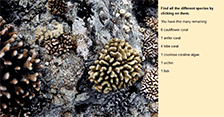How do we monitor coral reefs? |
Coral reefs, like all ecosystems, naturally change over time. However, coral reefs are also changed by activities on land that add nutrients and sediments to the ocean, increase air pollution, and contribute to climate change. To observe the natural and human-caused changes on coral reefs, scientists in the National Park Service Pacific Island Network Inventory and Monitoring program monitor coral reefs by recording changes in coral cover, fish populations, species diversity, coral bleaching events, and disease events. By observing the key features of an ecosystem over time (monitoring), scientists discover long-term trends on coral reefs. Since climate change is a long-term trend, monitoring is a good tool for understanding how it impacts coral reefs.
Monitoring and observation are not new concepts. For centuries, Pacific islanders observed the ocean and coral reefs. These observations led to discoveries about currents, tides, life histories of marine organisms, and sustainable fishing practices that were passed down from generation to generation. In many ways, the Pacific island peoples were scientists before science became part of our vocabulary. Today, we still learn through observation, and scientists use these observations to monitor changes in coral reef health. Check out Notes from the Field to see how scientists today make observations and collect data for monitoring.
Roll over the photos to discover what scientists are monitoring..
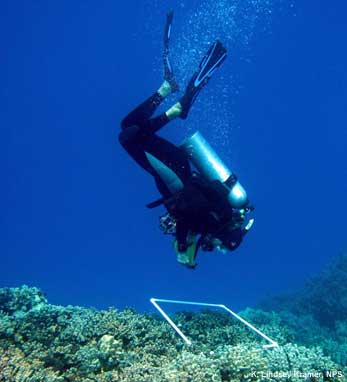
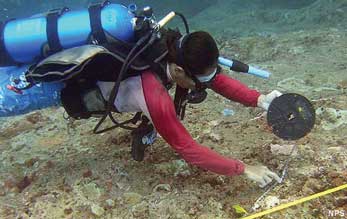
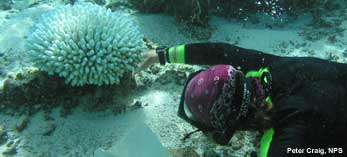
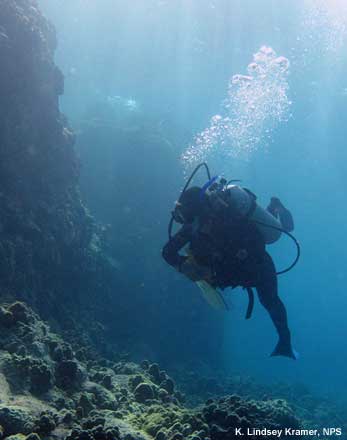

Many people are interested in monitoring coral reefs in the Pacific Ocean. Global programs, national efforts, and Hawaii initiatives collect information on the health of coral communities. This information contributes to local reef management plans and global understanding of the world's coral reefs.
| A`ohe pau ka `ike i ka halau ho`okahi All knowledge is not taught in one school. — Hawaiian proverb | Environmental problems are of an interdisciplinary nature. We need to understand the biology, chemistry, and physics of the land and sea if we are to address the environmental challenges we face today. |

